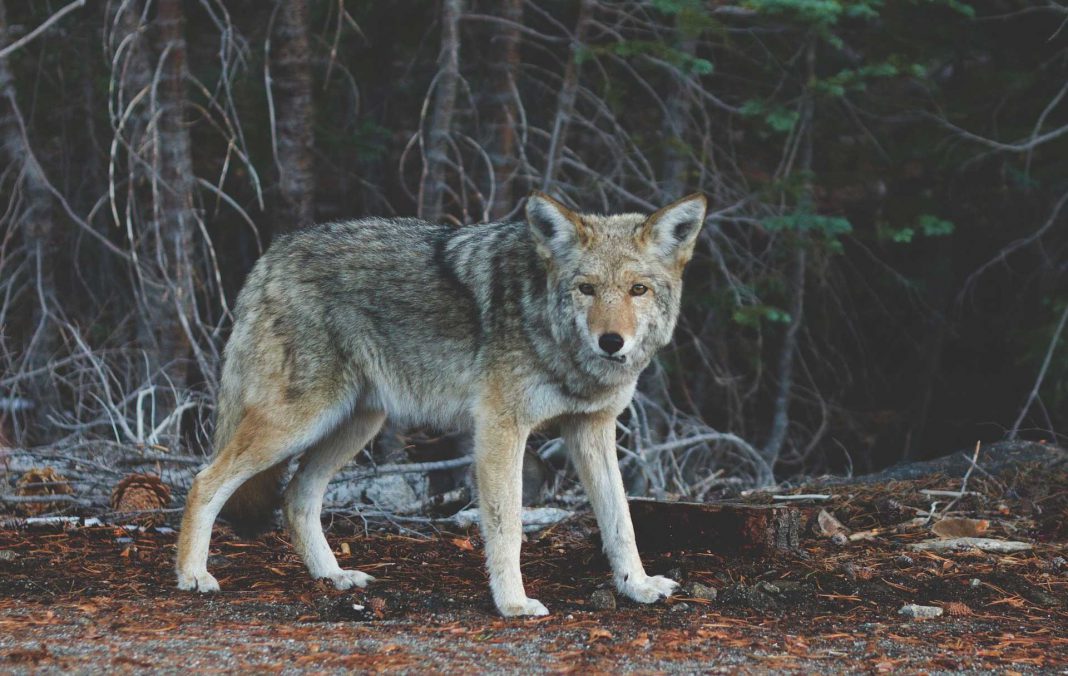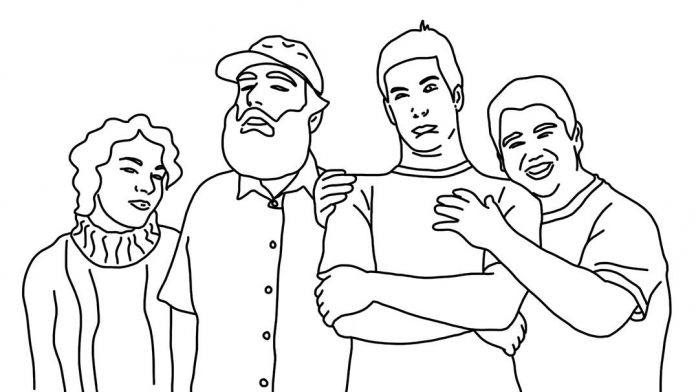MINDEMOYA—More stakeholder consultation and a comprehensive and inclusive study of the Algonquin wolf is something members of the Manitoulin Trapper’s Council is calling for in regards to the Ministry of Natural Resources and Forestry (MNRF) proposal, posted on the Environmental Bill of Rights (EBR #013-1813) which, if it goes ahead, would make areas included in it no-hunting or no-trapping areas for Algonquin wolves and coyotes. Manitoulin Island is not included in the proposal, as of yet.
“This is the draft letter we came up in response to send as our input into the EBR,” said George Hagen of the Manitoulin Trapper’s Council at a meeting the club held this past Sunday.
Mr. Hagen pointed out, “the EBR on Algonquin wolf came out on January 15 and we (members of the public) had until February 14 to respond,” noting that in most cases with EBR, the public comment period is 90 days; 30 days is the shortest window that can be provided.
“I thought the first 25 pages of the report made no sense because the ministry (MNRF) contradicts themselves several times,” said Mr. Hagen. “For instance, it says in part that the Algonquin red wolf species officially came into being in 2016 and, in 2017, it was declared a species at risk.” The ban on hunting or trapping Algonquin wolves and coyotes (first enacted in 2016) included 40 townships, up to Killarney, the Kawarthas and Burwash, and the newest EBR looks to extend the current protected area. This includes an area that roughly follows a straight line from Sault Ste. Marie to Sudbury, to North Bay to Pembroke down to Bancroft to Peterborough and Barrie.
Natalie Parrington, secretary of the local trappers’ council, read out the letter that had been forwarded to the ministry on February 7. “After reading the draft document for the recovery strategy of the Algonquin wolf it would appear that more study is required. We are of the opinion that hybridization is as much an issue as human-caused mortality. Stopping the hunting or trapping of coyotes and other admixed canids will further serve to deplete the gene pool of this species if, in fact, it is a distinct species. It would appear that this wolf was formed from this hybridization of the western coyote, grey wolf and eastern wolf. If that is the case then this wolf may morph into an Algonquin wolf/coyote mix if we ban the trapping of coyotes and other admixed canids.”
“We believe that if this apex predator is protected it will have an adverse effect on the food chain,” said Ms. Parrington. “It is our experience that when wolf populations are high there is a decrease in beaver, deer and moose populations. If we allow the harvest of beaver, deer and moose then we must also harvest wolves and coyotes. What we take from the bottom of the food chain we must also take from the top of the food chain. Protection could lead to overpopulation which will result in disease and starvation for the wolf and also greatly reduce beaver, deer and moose populations.”
“We believe that in areas where the ban is in place there will be increased contact with humans as wolves and coyotes move closer to town in search of food. We have personal knowledge of coyotes taking pets in backyards in these areas. We believe that the recovery strategy appears to target the hunter and trapper in the short term and has adopted a more wait and see attitude with industry. There is no hard science as to numbers of this species and a serious debate is needed among biologists as to the genetic structure of the Algonquin wolf,” read Ms. Parrington.
“We believe that further consultation with all the stakeholders is required. We feel that a legislative ban at this time would be premature and ineffective in the long term. We believe that further investigation from the scientific community and all concerned stake holders is needed. Let’s do a comprehensive and inclusive study and get it right,” read Ms. Parrington.
“Well done,” stated one of the council members at the meeting.
“We would have liked everyone to respond on their own,” said Mr. Hagen. “I’ve been involved in the trapping council since it was initiated and the ministry process, I believe, they (MNRF) have already made up their mind to do this. I have been told legislation on this will come within nine months.”
“Our saving grace is there is a provincial election this year,” said Mr. Hagen. “We as a trappers’ council, Ontario Fur Managers of Ontario and Ontario Federation of Anglers and Hunters are all calling on the province to add science-based evidence to the action they are proposing. That is the issue I have, they have no science in place. They have no idea how many wolves there are or what their patterns are.”
“What is an Algonquin red wolf?” asked Mr. Hagen. “I’ve been trapping wolves for over 40 years and what is the difference between an Algonquin wolf, Grey or an Eastern wolf? It all boils down to genetics and the only way to determine any of this is through DNA testing.”
EDITOR’S NOTE: Please see more coverage in future edition of the Recorder.





